The Ultimate Guide to Choosing the Right Gym Equipment for Your Home Workout Space
Setting up a home gym can feel like a daunting task, especially with the overwhelming number of options available. Whether you’re a beginner looking for affordable gym equipment for home workouts or a seasoned fitness enthusiast aiming to build a professional-grade home gym, this guide will walk you through everything you need to know. From defining your fitness goals to maximizing your space and budget, we’ve got you covered. Let’s get started!
1. Assess Your Fitness Goals: The First Step to Building Your Dream Gym
Building your dream home gym starts with assessing your fitness goals. Understanding your objectives will help you make informed decisions when selecting equipment. Here’s how to align your goals with the right equipment for your space:
Strength Training: Build Muscle and Strength
If your goal is to build muscle, tone your body, or increase strength, investing in strength training equipment is key. Here are a few options to consider:
- Adjustable Dumbbells: Perfect for versatility in your strength training routine, adjustable dumbbells allow you to customize the weight for various exercises. They save space compared to traditional dumbbells and give you the flexibility to adjust weight increments as you progress.
- Kettlebells: Ideal for full-body strength workouts that incorporate dynamic movements (like swings and snatches), kettlebells help build strength, power, and coordination.
- Resistance Bands: These bands are great for strength training, targeting specific muscle groups with varying resistance. They also provide a full range of motion and can be used for a variety of exercises, from isolation movements to full-body routines.
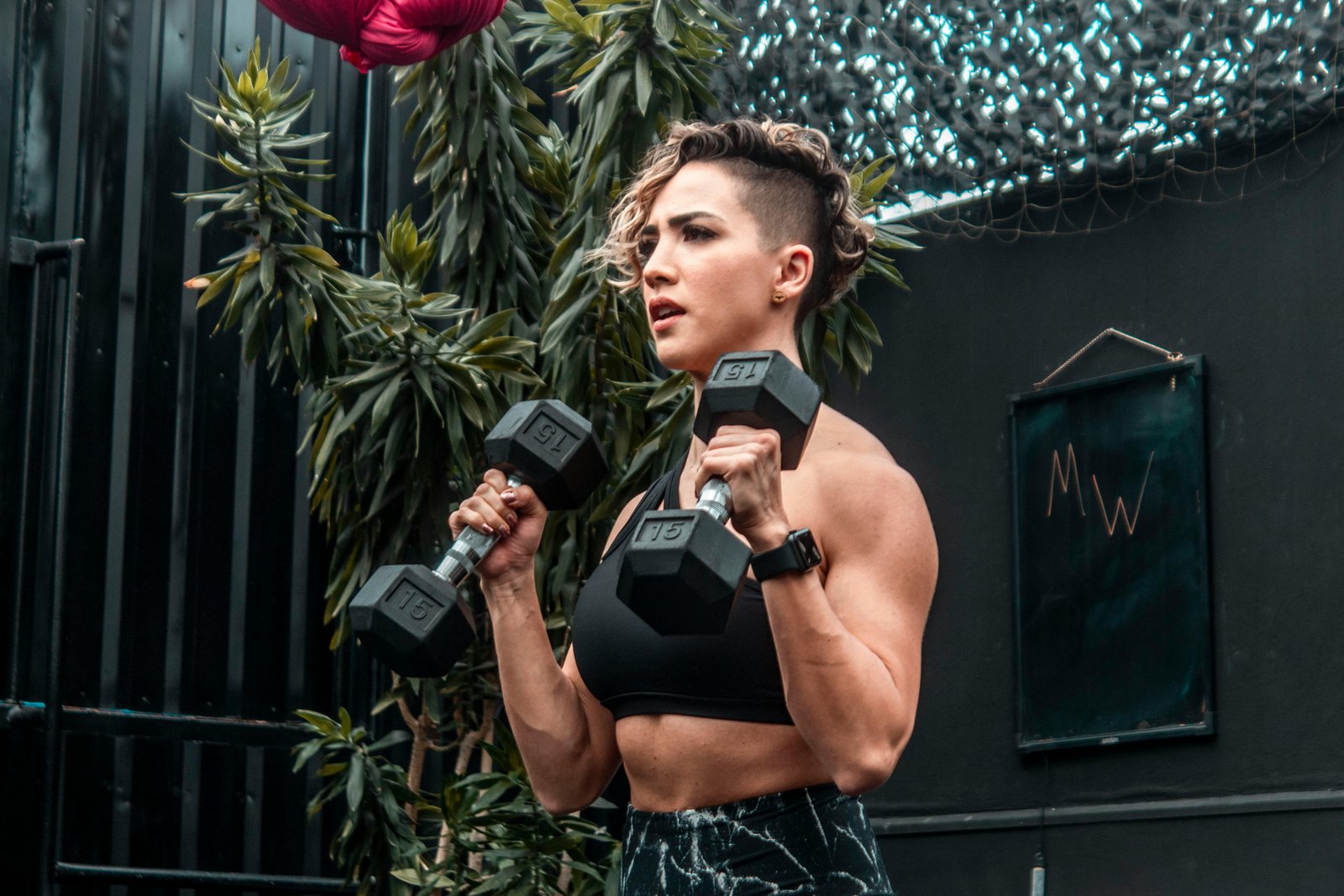
Reference: Check out the Adjustable Dumbbells for a versatile and space-saving option.
Supplement Suggestion: Pair your strength training with whey protein to support muscle recovery and growth.
Cardio: Boost Heart Health and Endurance
For those looking to improve cardiovascular health or burn fat, cardio equipment is a must. Whether you’re looking for low-impact or high-intensity options, here’s what you can consider:
- Treadmills: A classic cardio machine, treadmills allow for walking, jogging, or running indoors, providing an excellent way to increase endurance and burn calories.
- Stationary Bikes: These are great for low-impact cardio that focuses on endurance while providing an effective workout for your legs and lower body.
- Jump Rope: A portable and highly effective cardio tool, jump ropes provide a high-intensity workout that burns calories and improves coordination. It’s a great option if you’re short on space but still want an efficient cardio routine.

Reference: The Foldable Treadmill is a great choice for small spaces.
Supplement Suggestion: Stay energized during cardio with BCAAs (Branched-Chain Amino Acids). They help reduce fatigue and support muscle recovery.
Flexibility and Recovery: Enhance Mobility and Reduce Soreness
Don’t forget the importance of recovery in your fitness journey. These tools can help you increase flexibility, improve mobility, and speed up post-workout recovery:
- Yoga Mat: Essential for any flexibility-based workout like yoga, Pilates, or stretching routines. A good yoga mat provides cushioning and stability.
- Foam Roller: Great for relieving muscle tension, improving circulation, and aiding in muscle recovery after intense workouts.
- Stability Ball: Perfect for enhancing core strength, balance, and flexibility. It can be used for stretching, stability exercises, and even as a seat for improving posture.
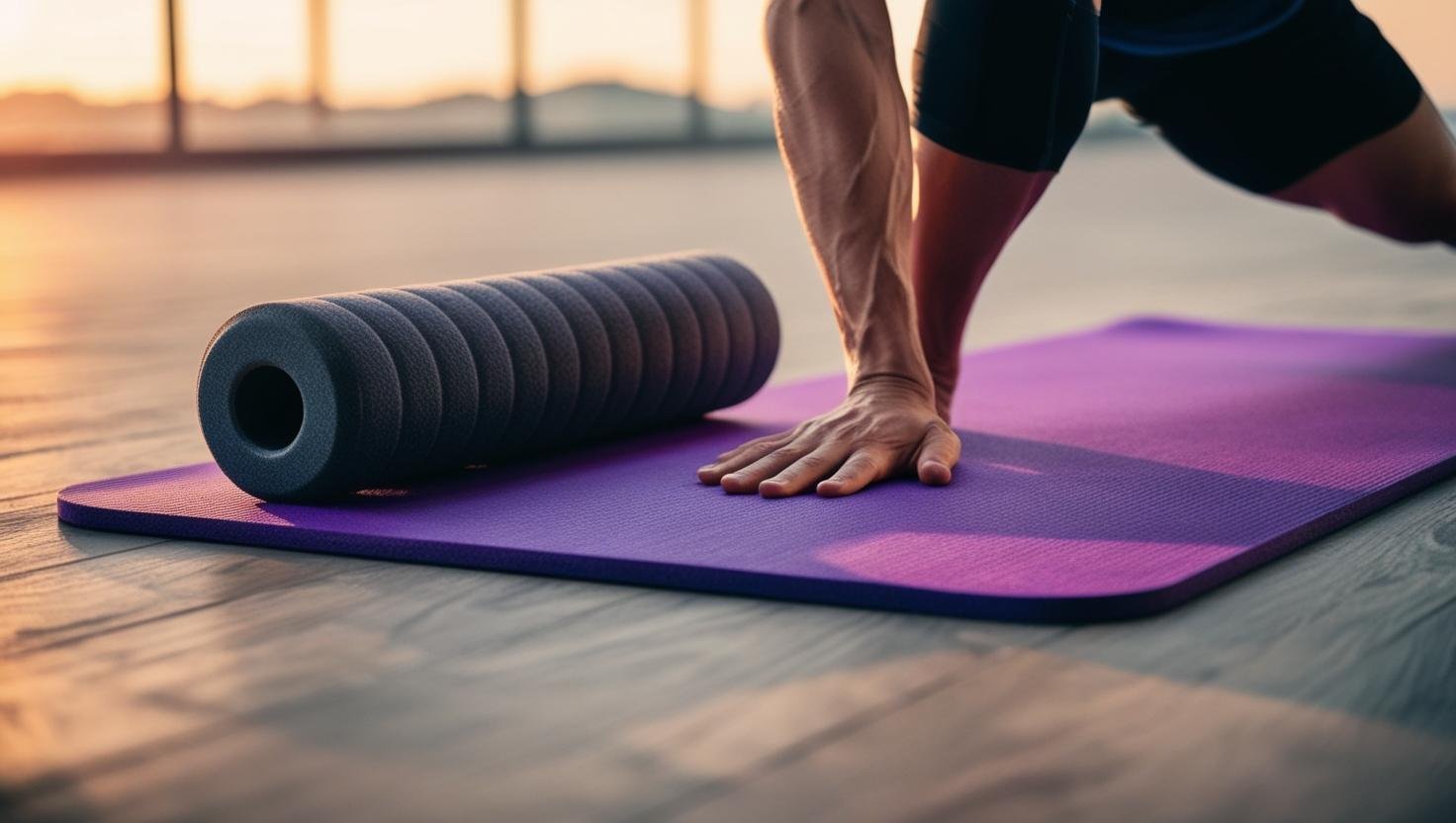
Reference: Try the Thick Yoga Mat for extra cushioning and grip.
Supplement Suggestion: Enhance your flexibility and recovery with collagen peptides. They support joint health and improve skin elasticity.
2. Consider Your Available Space: How to Maximize Your Home Gym Setup
When designing a home gym, space is a crucial factor in determining what equipment you can accommodate. Whether you have a small apartment corner or an entire room dedicated to fitness, strategic planning ensures you get the most out of your workout area.
Small Spaces: Compact & Versatile Equipment
If you’re working with limited space, it’s essential to choose equipment that is compact, portable, and easy to store. The goal is to maximize functionality without cluttering your home.
Best Equipment for Small Spaces:
- Resistance Bands – Extremely lightweight and portable, resistance bands allow for full-body workouts without taking up much room.
- Adjustable Dumbbells – Instead of buying multiple dumbbells, an adjustable set lets you change the weight with a simple dial, saving space while providing versatility.
- Foldable Treadmills – A great option for cardio that can be folded and stored under a bed or against a wall when not in use.
- Suspension Trainers (e.g., TRX) – Can be anchored to a door and used for bodyweight strength training, eliminating the need for bulky machines.
- Jump Rope – Perfect for a high-intensity cardio workout without requiring much space.
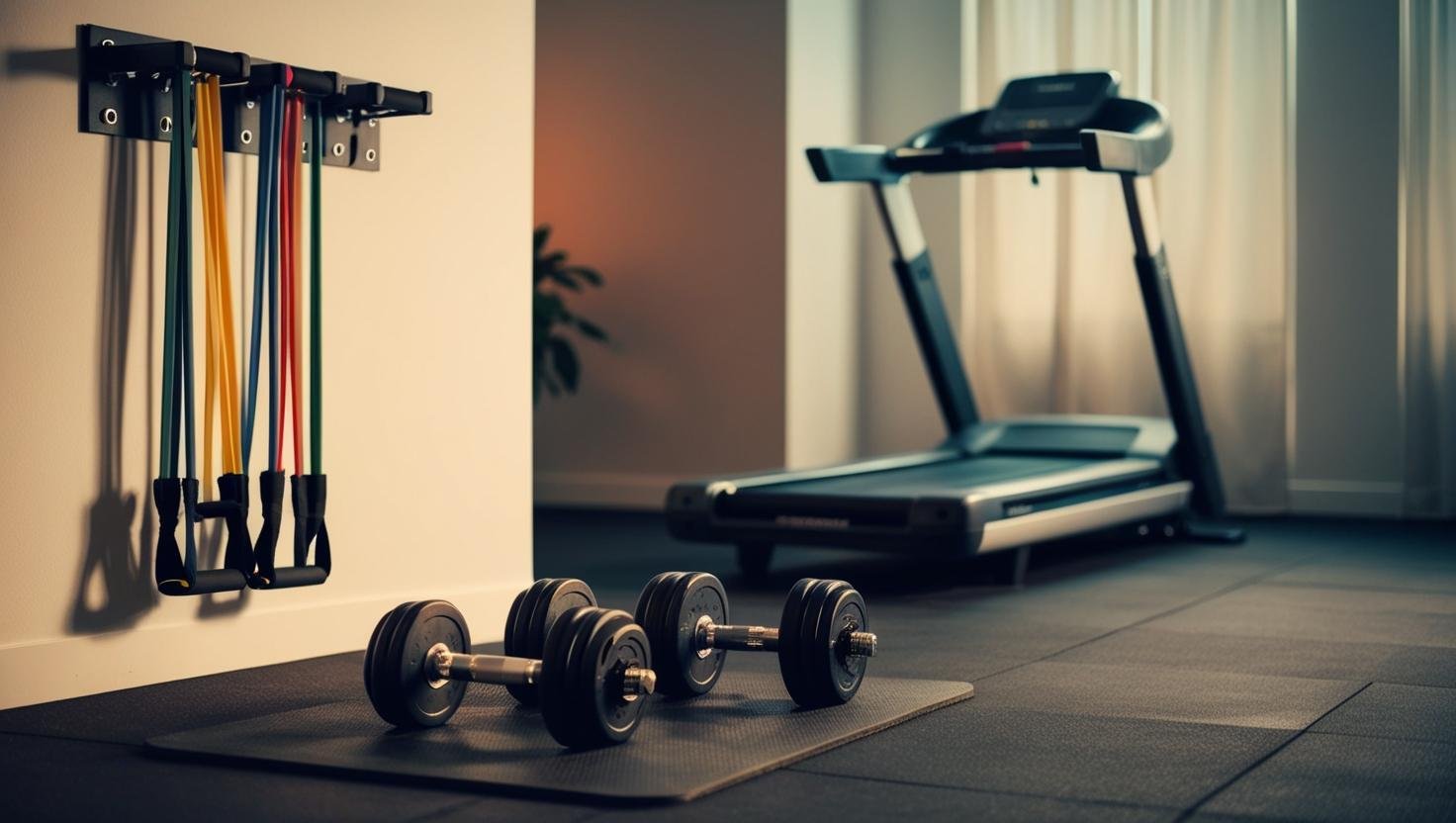
Reference: The Resistance Bands Set is perfect for small spaces and full-body workouts.
Supplement Suggestion: Boost your workouts with pre-workout supplements for an energy boost.
Medium Spaces: Balanced Variety Without Bulk
If you have a spare room, basement area, or garage corner, you can expand your setup to include a mix of strength and cardio equipment.
Best Equipment for Medium Spaces:
- Weight Bench – Adds versatility to strength training, allowing for exercises like bench presses, step-ups, and core workouts.
- Kettlebell Set – Kettlebells are compact but offer dynamic, full-body strength and cardio workouts.
- Compact Multi-Gym Station – Machines like a cable pulley system or a power tower provide multiple exercises while minimizing footprint.
- Rowing Machine – A great alternative to treadmills that provides a full-body cardio workout with less space.
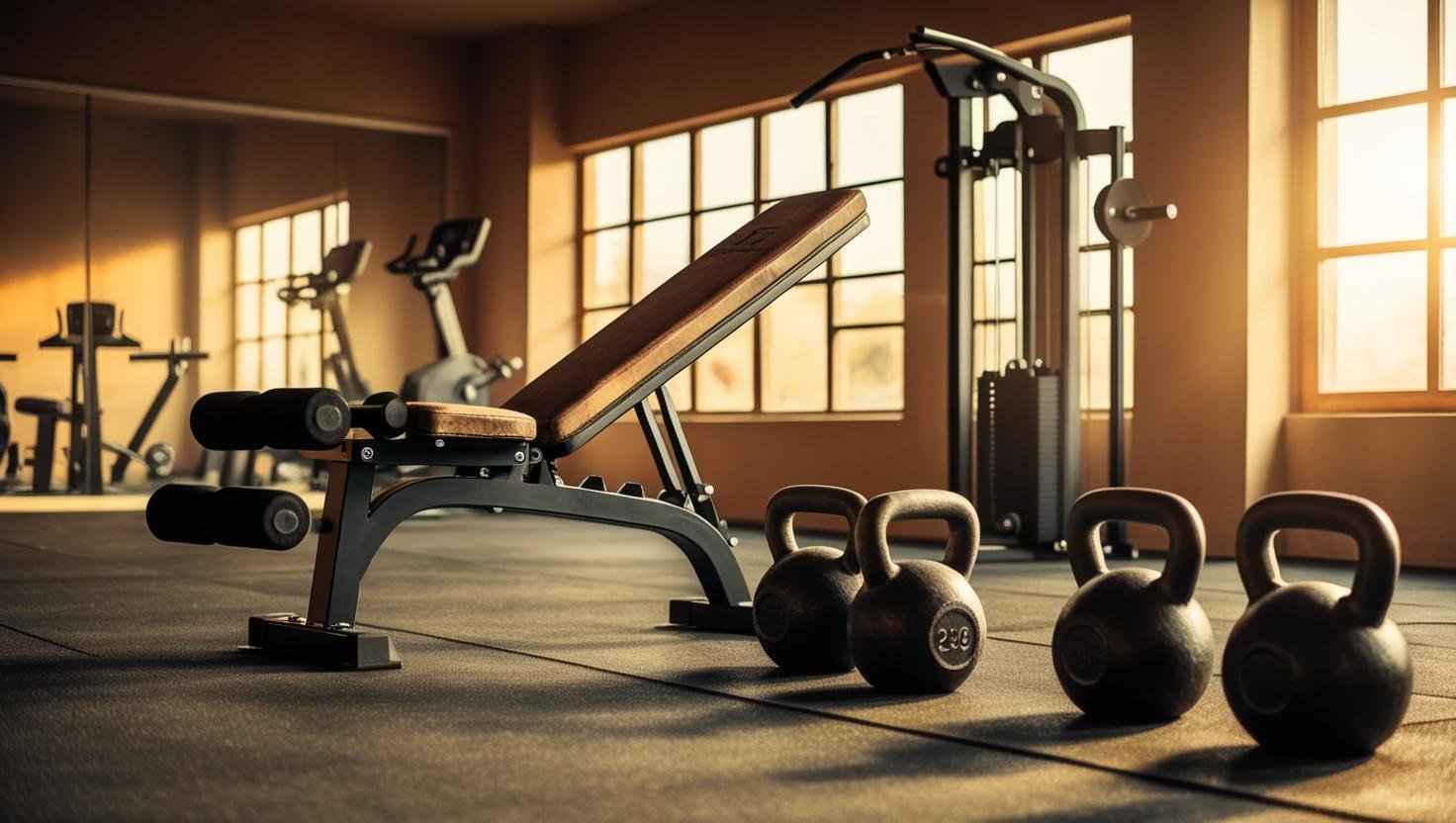
Reference: The Adjustable Weight Bench is a durable and affordable option.
Supplement Suggestion: Support muscle recovery with creatine monohydrate. It’s proven to enhance performance and muscle gains.
Large Spaces: Build a Full-Scale Home Gym
If you have a garage, basement, or a dedicated home gym room, you can go all out with professional-grade fitness equipment.
Best Equipment for Large Spaces:
- Squat Rack with Barbell and Plates – A must-have for heavy strength training, allowing for squats, deadlifts, and bench presses.
- Full-Sized Treadmill or Elliptical – For those who prefer structured cardio workouts with advanced performance tracking.
- Functional Trainer Machine – A cable system that allows for full-body resistance training with adjustable weights.
- Smart Home Gym Systems (e.g., Tonal or Mirror) – These interactive fitness mirrors offer guided workouts and take up minimal floor space.
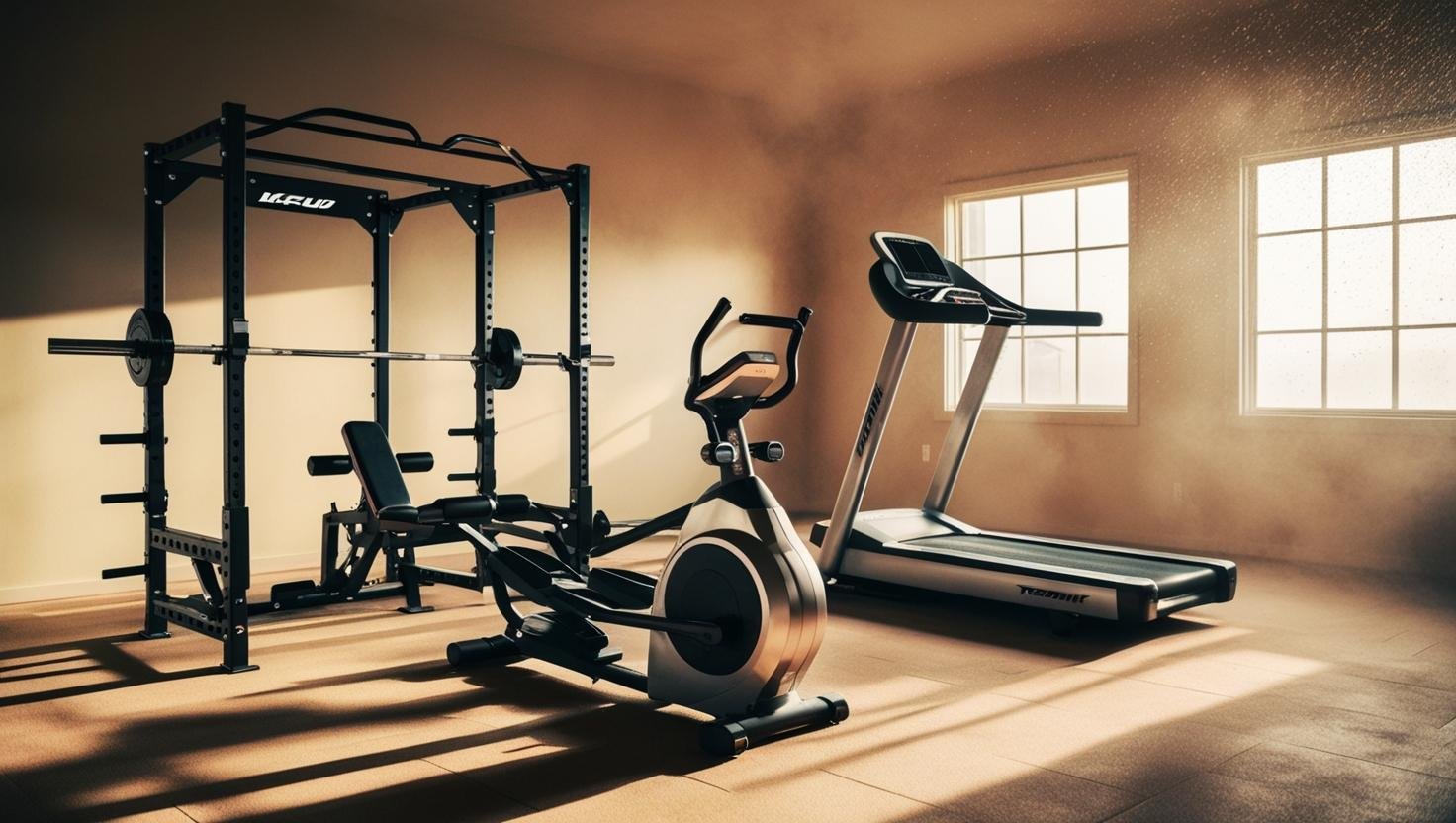
Reference: The Squat Rack is a top choice for serious lifters.
Supplement Suggestion: Fuel your intense workouts with electrolyte supplements to stay hydrated.
3. Set a Realistic Budget: How to Build a Home Gym Without Breaking the Bank
Creating a home gym doesn’t have to be expensive. Whether you’re on a tight budget or willing to invest in high-end equipment, knowing how to prioritize your spending ensures you get the best value. Here’s how to build a home gym that fits your budget while still meeting your fitness goals.
Budget-Friendly Home Gym ($100 – $300)
If you’re on a tight budget, focus on versatile, space-saving equipment that delivers great results without a hefty price tag.
Best Equipment for Budget Home Gyms:
- Resistance Bands ($10 – $40) – Perfect for full-body workouts, strength training, and stretching.
- Jump Rope ($10 – $20) – A fantastic cardio tool that takes up virtually no space.
- Yoga Mat ($20 – $50) – Essential for stretching, bodyweight exercises, and floor workouts.
- Stability Ball ($20 – $40) – Ideal for core training, flexibility, and balance exercises.
- Adjustable Dumbbells (Entry-Level) ($50 – $100) – A compact alternative to a full dumbbell rack.
Tip: Look for second-hand equipment on platforms like Facebook Marketplace or Craigslist to save even more.
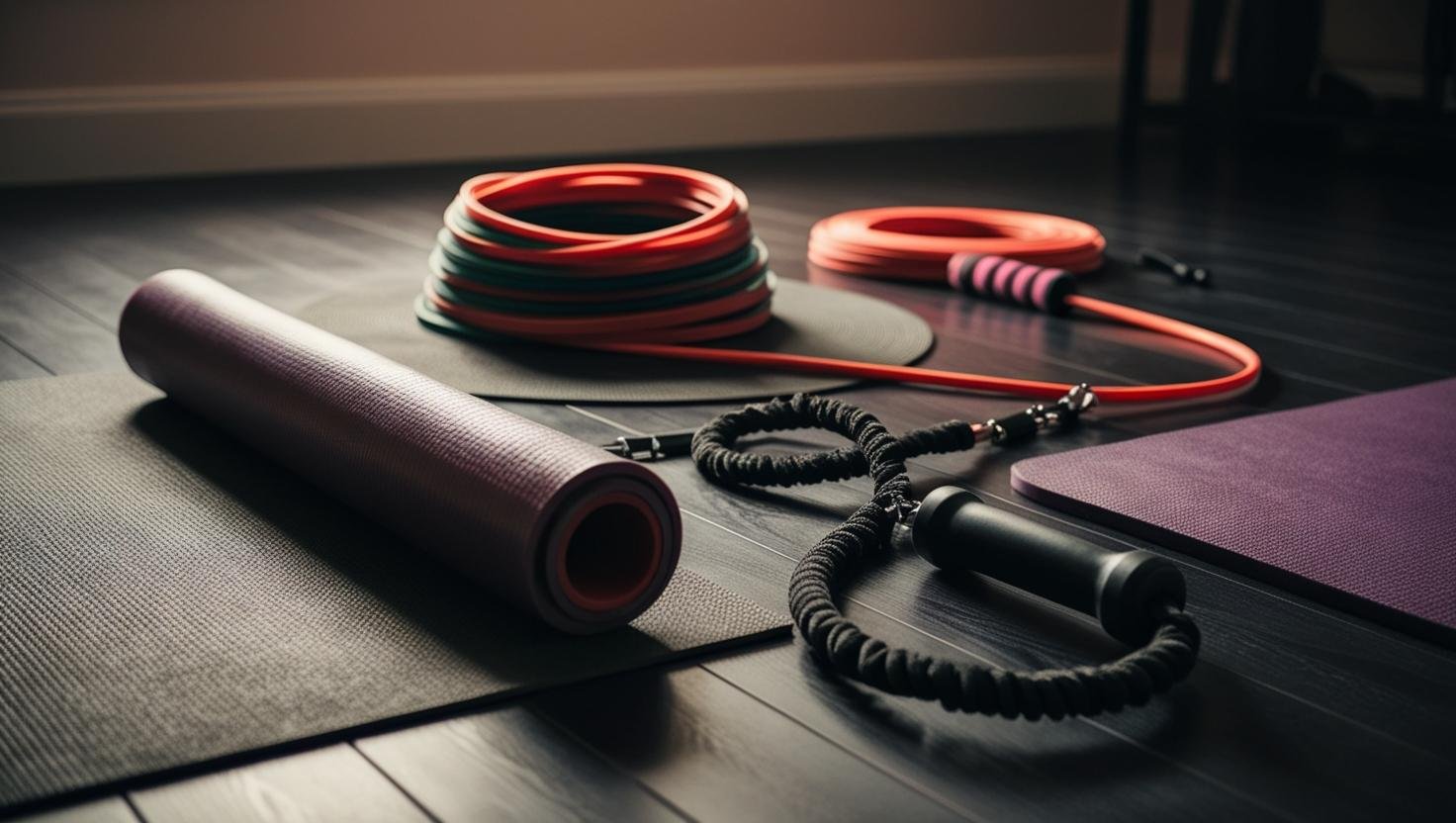
Reference: The Yoga Mat is a high-quality, affordable option.
Supplement Suggestion: Support your budget-friendly workouts with multivitamins to fill nutritional gaps.
Mid-Range Home Gym ($300 – $1,000)
If you have a moderate budget, you can expand your setup with more durable and versatile equipment that adds variety to your workouts.
Best Equipment for Mid-Range Home Gyms:
- Adjustable Dumbbells ($200 – $400) – A must-have for strength training without needing multiple dumbbells.
- Kettlebell Set ($50 – $150) – Great for dynamic, full-body movements.
- Compact Rowing Machine or Stationary Bike ($300 – $700) – Provides a solid cardio workout without taking up too much space.
- Weight Bench ($100 – $200) – Increases exercise variety for strength training.
- Pull-Up Bar or Suspension Trainer ($50 – $100) – Enhances bodyweight strength training.
Tip: Invest in multi-use equipment like dumbbells and kettlebells, which provide a full-body workout without taking up much room.
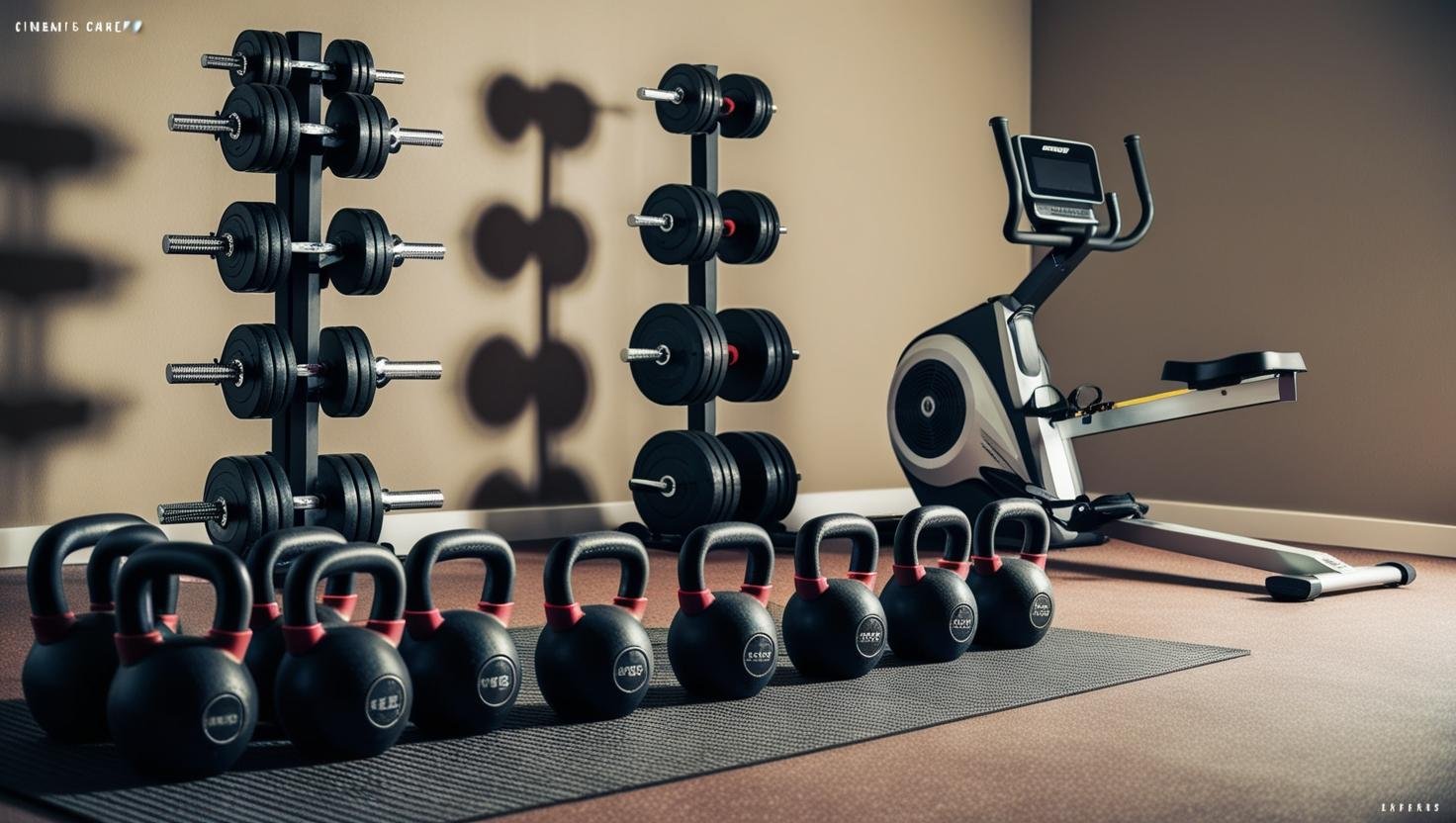
Reference: The Kettlebell is a versatile and durable choice.
Supplement Suggestion: Enhance your performance with omega-3 fatty acids. They support joint health and reduce inflammation
High-End Home Gym ($1,000+)
If budget isn’t a concern, you can build a luxury home gym that rivals professional fitness centers, complete with advanced strength training and smart technology.
Best Equipment for High-End Home Gyms:
- Power Rack with Barbell and Plates ($800 – $2,000) – Essential for heavy lifting and full-body strength training.
- High-End Treadmill or Elliptical ($1,500 – $4,000) – Comes with interactive workout programs and performance tracking.
- Multi-Functional Home Gym Machine ($2,000 – $5,000) – Allows for various strength training exercises in one machine.
- Smart Home Gym Systems (Tonal, Mirror, or Tempo) ($1,500 – $3,000) – Offers virtual training, progress tracking, and AI-powered coaching.
Tip: If space allows, add mirrors, gym flooring, and storage racks for a professional look and feel.
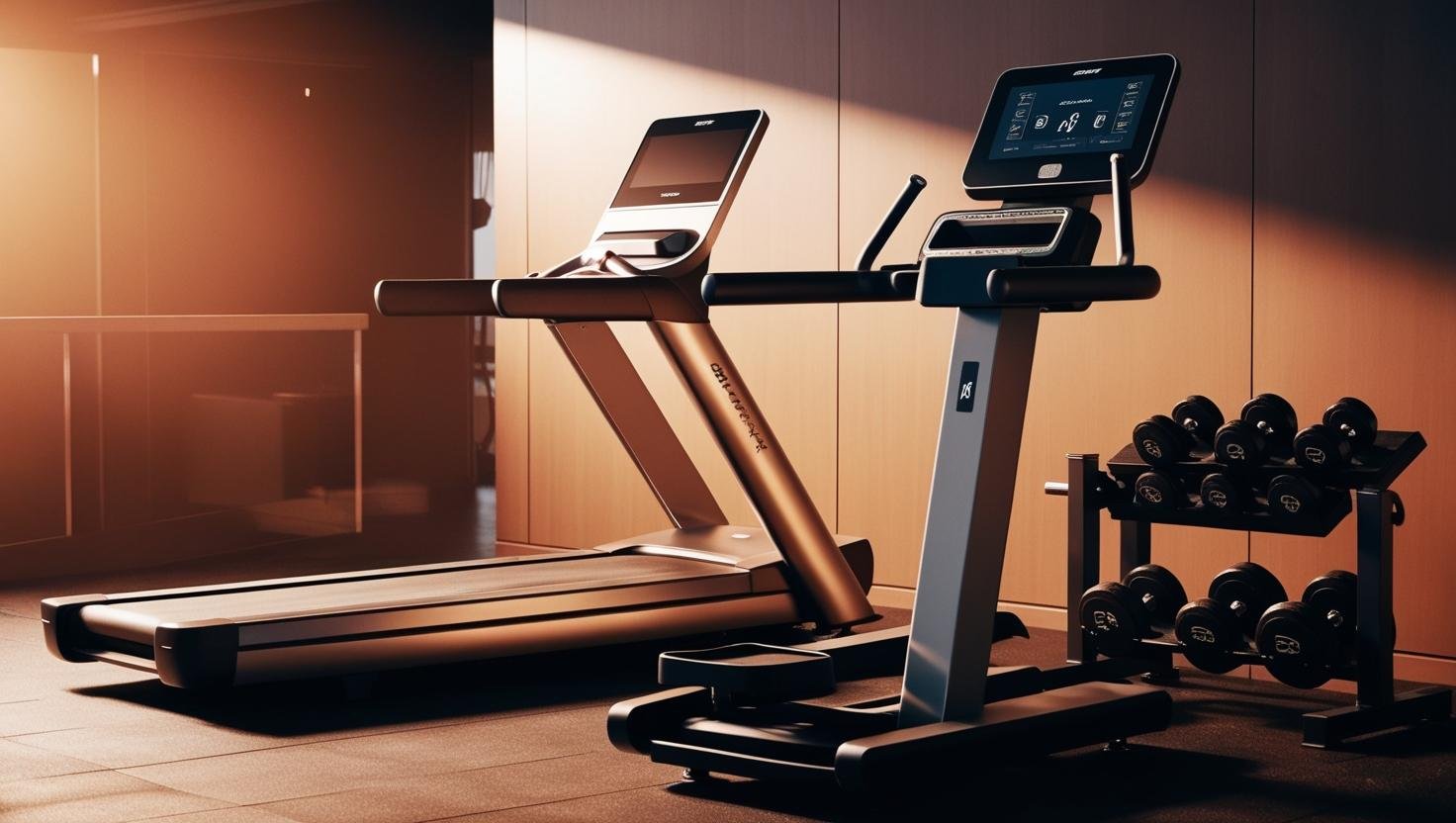
- Reference: The Commercial Treadmill is a premium option for serious runners.
- Supplement Suggestion: Optimize recovery with glutamine. It helps reduce soreness and speeds up recovery.
4. Prioritize Versatility: Get the Most Out of Your Equipment
When setting up a home gym, choosing versatile equipment is essential—especially if you have limited space or budget. Investing in multi-functional tools ensures you can perform a variety of exercises without cluttering your workout area.
Adjustable Dumbbells: The Ultimate Strength Training Tool
Adjustable dumbbells are one of the best investments for any home gym. Instead of buying multiple sets of weights, you can adjust the resistance as needed, making them perfect for progressive strength training.
Why They’re a Must-Have:
- Replace an entire dumbbell rack, saving space and money.
- Allow for progressive overload, helping you build muscle efficiently.
- Support full-body workouts, including squats, presses, rows, and curls.
Recommended Adjustable Dumbbells:
- Bowflex SelectTech 552 – Easy weight adjustment with a dial system.
- PowerBlock Elite – Compact and expandable for heavier lifts.
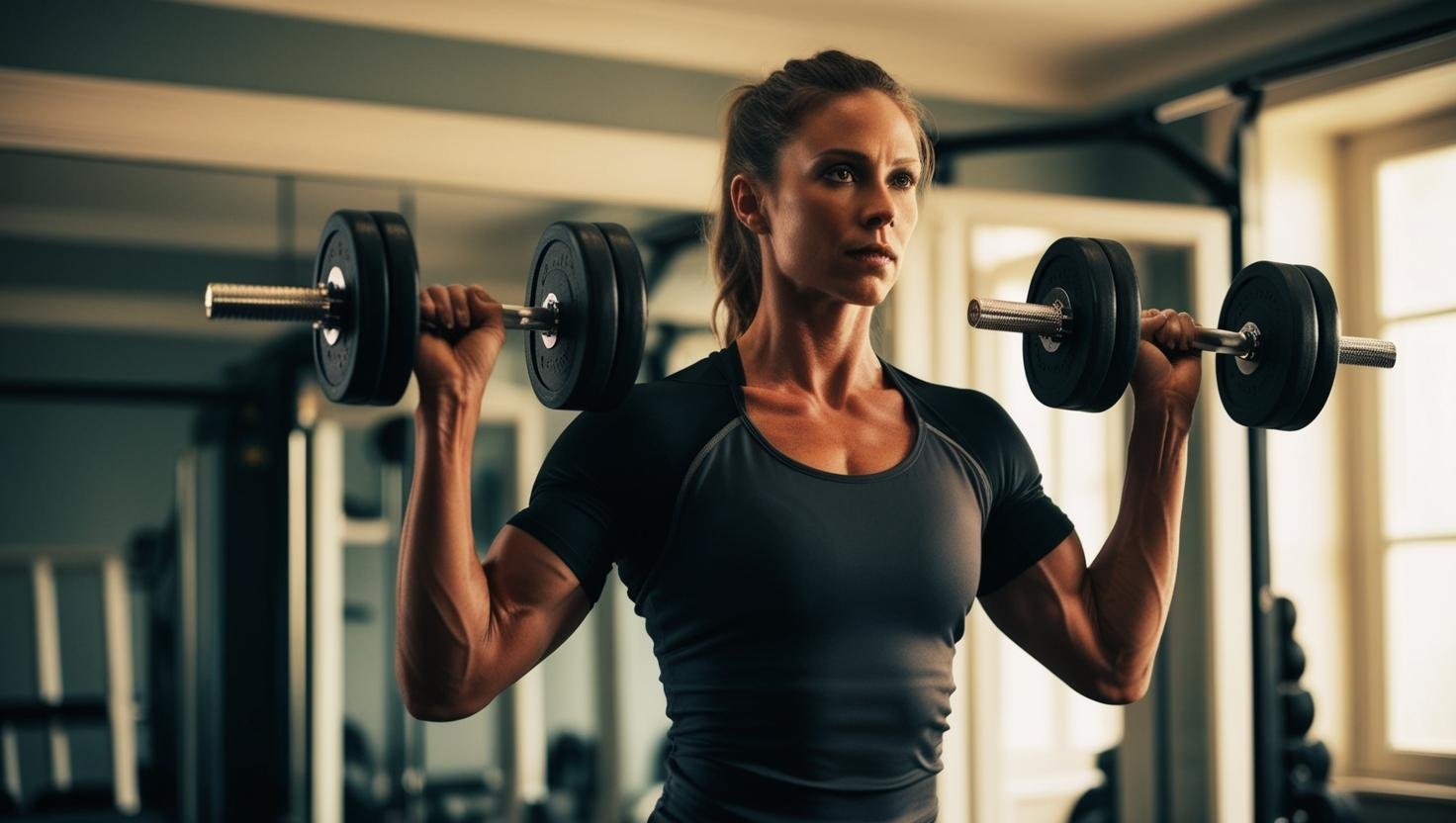
- Reference: The Adjustable Dumbbells are a top-rated choice.
- Supplement Suggestion: Pair your dumbbell workouts with protein bars for a quick post-workout snack.
Resistance Bands: Lightweight, Affordable, and Effective
Resistance bands provide a full-body workout while being easy to store and transport. They’re excellent for strength training, mobility work, and even injury rehabilitation.
Why They’re Essential:
- Offer constant tension throughout movements, increasing muscle engagement.
- Can be used for strength training, stretching, and rehabilitation.
- Lightweight and portable, making them ideal for travel workouts.
Types of Resistance Bands to Consider:
- Loop Bands – Great for lower-body exercises like squats and lateral walks.
- Tube Bands with Handles – Best for upper-body resistance training.
- Therapy Bands – Perfect for stretching and rehab exercises.
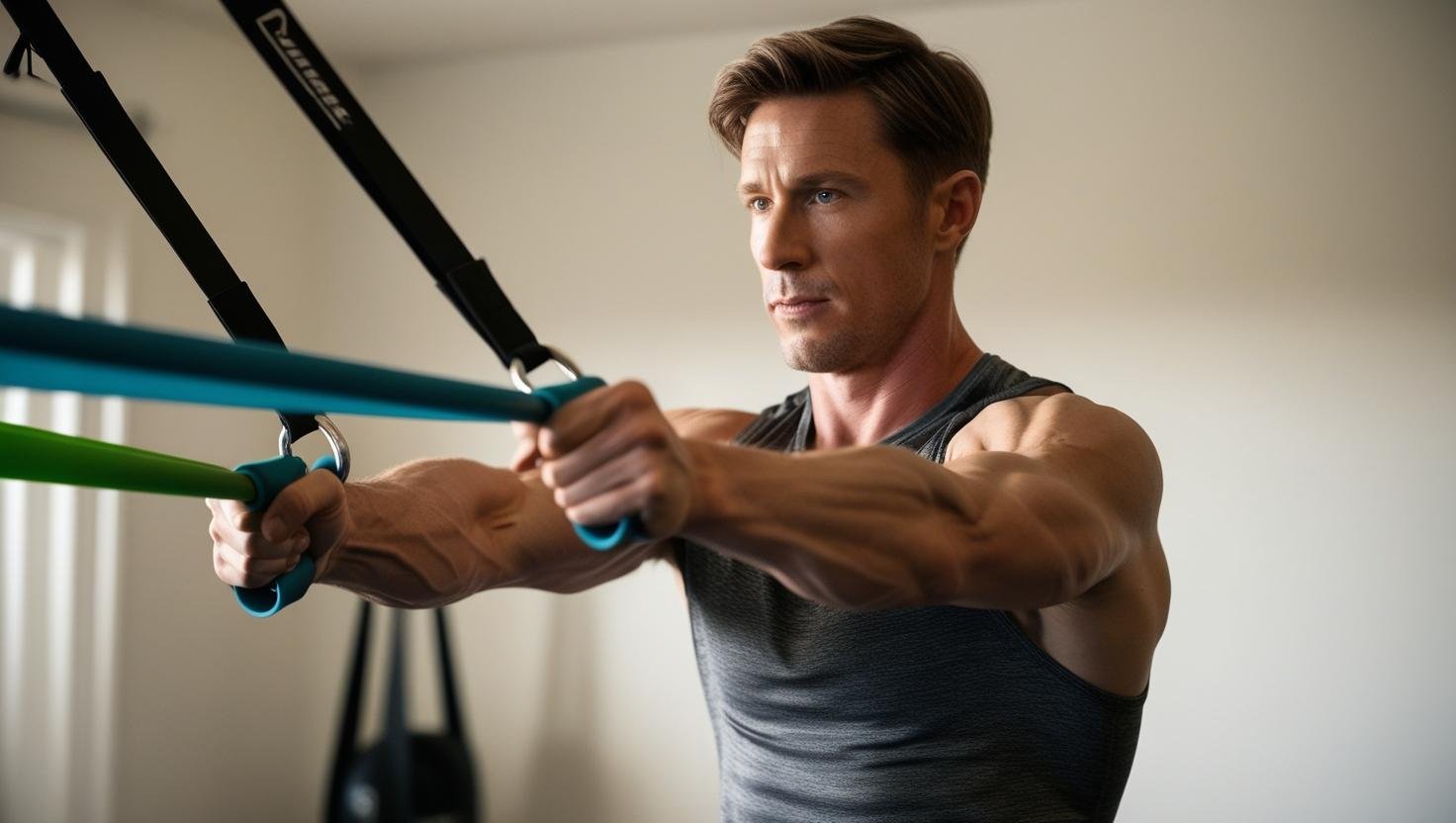
- Reference: The Resistance Bands are perfect for all fitness levels.
- Supplement Suggestion: Boost your energy with green tea extract. It’s a natural way to enhance focus and fat burning.
Stability Balls: Core Strength and Balance Training
Stability balls add variety to your workouts by improving core strength, balance, and flexibility. They’re also a great alternative to a traditional chair, promoting better posture while working from home.
How They Improve Your Training:
- Enhance core engagement in exercises like crunches and planks.
- Improve balance and flexibility, reducing injury risk.
- Can be used as an ergonomic seat to support posture throughout the day.
Best Uses for Stability Balls:
- Core Workouts – Sit-ups, leg raises, and plank variations.
- Strength Training – Squats, wall sits, and push-ups.
- Stretching and Mobility – Helps with deep stretches and relaxation exercises.
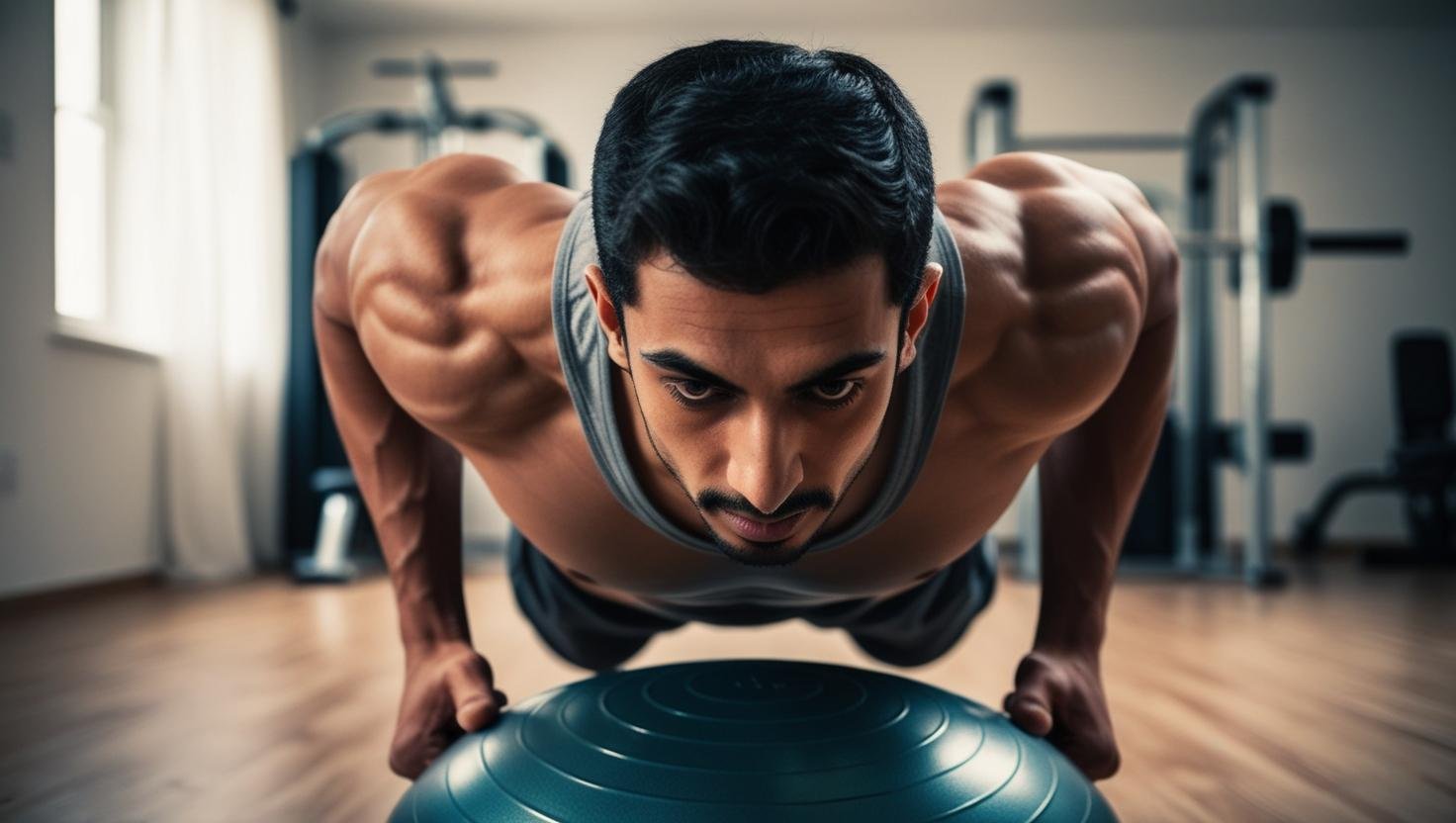
- Reference: The Stability Ball is durable and burst-resistant.
- Supplement Suggestion: Support core strength with magnesium supplements. They help relax muscles and improve sleep quality.
5. Focus on Quality and Durability: Invest in Equipment That Lasts
When building a home gym, quality and durability should be top priorities. Well-built equipment ensures safety, longevity, and a better workout experience. While budget options may be tempting, investing in sturdy, high-quality gear prevents frequent replacements and potential injuries.
Solid Construction: Materials Matter
The materials used in gym equipment impact durability and performance. Cheaply made gear can wear out quickly or become unsafe over time.
What to Look For:
- Steel Frames – Ideal for strength equipment like squat racks, barbells, and benches.
- Heavy-Duty Rubber – Found in resistance bands and bumper plates, providing longevity and flexibility.
- High-Quality Padding – Ensures comfort and support in benches, mats, and stability balls.
Examples of High-Quality Equipment:
- Power Racks: Look for heavy-gauge steel construction with reinforced welds.
- Dumbbells & Kettlebells: Opt for solid cast iron or rubber-coated weights.
- Resistance Bands: Choose thick, layered latex bands to prevent snapping.
Warranty: A Sign of Reliability
A solid warranty reflects the manufacturer’s confidence in their product’s durability. Before purchasing, check the warranty period and coverage details.
Key Warranty Considerations:
- Frame Warranty: Strength equipment should have at least a 10-year or lifetime warranty.
- Electronics Warranty: Cardio machines like treadmills and bikes should offer at least 2-5 years on motors and digital components.
- Wearable Parts: Look for coverage on belts, cables, and resistance bands, as these degrade over time.
User Reviews: Real-World Insights
Customer reviews provide firsthand insights into a product’s durability, ease of use, and performance over time.
How to Evaluate Reviews:
- Durability Mentions: Look for feedback on wear and tear after months of use.
- Assembly & Maintenance: Check if users report frequent maintenance issues.
- Brand Reputation: Established brands often have consistent quality across their product lines.

6. Think About Maintenance and Storage: Keep Your Gym Organized
A well-maintained and organized home gym enhances your workout experience and extends the lifespan of your equipment. Some machines require regular upkeep, while others need smart storage solutions to fit into limited spaces.
Maintenance: Keep Your Equipment in Top Shape
Proper maintenance ensures your gym equipment functions smoothly and lasts longer. While some items require minimal upkeep, others—especially cardio machines—need regular servicing.
Equipment-Specific Maintenance Tips:
- Treadmills & Ellipticals: Lubricate the belt, clean dust from the motor, and check for loose bolts monthly.
- Weight Machines & Racks: Wipe down metal surfaces to prevent rust, and inspect cables for wear.
- Dumbbells & Kettlebells: Store in a dry place to prevent rust and clean handles for better grip.
- Resistance Bands: Keep away from sharp objects and direct sunlight to prevent snapping.
Pro Tip: Check the manufacturer’s maintenance guidelines to keep warranties valid.
Storage: Maximize Your Space
If you have a small home gym, smart storage solutions can help keep your space tidy and functional.
Best Storage Options for Different Equipment:
- Foldable Equipment: Look for collapsible treadmills, adjustable benches, or compact rowing machines.
- Wall-Mounted Racks: Store barbells, resistance bands, and weight plates off the floor.
- Vertical Dumbbell & Kettlebell Stands: Save space while keeping weights organized.
- Storage Bins & Hooks: Use bins for yoga mats and hooks for jump ropes and resistance bands.
Pro Tip: Multi-purpose furniture, like an ottoman with storage, can double as gym storage and seating.
Portability: Easy-to-Move Fitness Gear
Portable fitness equipment is great for those who need flexibility in their workout space or travel often.
Best Portable Fitness Equipment:
- Resistance Bands: Lightweight and easy to pack for travel workouts.
- Adjustable Dumbbells: Replace multiple weight sets while staying compact.
- Jump Ropes: A simple, high-intensity cardio tool that takes up almost no space.
- Yoga Mats: Roll up for easy storage and transport.
Pro Tip: If you need to move equipment frequently, look for items with wheels or carrying handles.
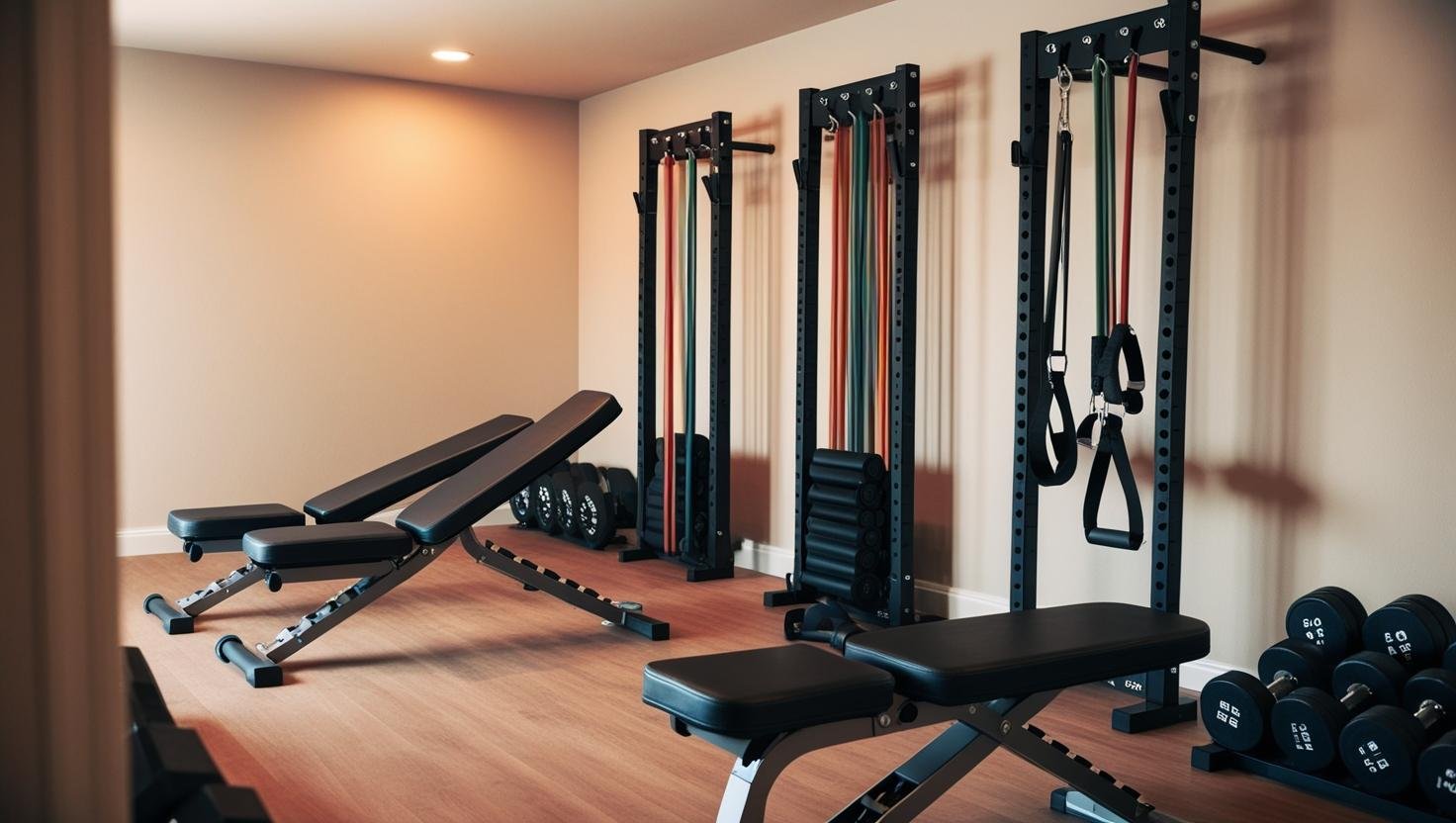
7. Test Before You Buy: Ensure Comfort and Ease of Use
Before investing in gym equipment, it’s important to test it whenever possible. Visiting a local store or gym allows you to evaluate key factors like comfort, ease of use, and noise level.
Comfort: Make Sure It Feels Right
If your equipment isn’t comfortable, you’re less likely to use it consistently. Pay attention to:
- Adjustability: Can you modify settings to fit your body size and range of motion?
- Padding & Grip: Check if benches, seats, and handles have enough cushioning or non-slip grips.
- Natural Movement: Test machines to ensure they allow for smooth, ergonomic movement.
Pro Tip: Look for brands that offer adjustable settings for a customized fit.
Ease of Use: Choose User-Friendly Equipment
Complicated or hard-to-adjust equipment can be frustrating. Before buying, check:
- Quick Adjustments: Ensure settings like weight stacks, resistance levels, or seat height are easy to modify.
- Simple Interfaces: If purchasing smart gym equipment, test the touchscreen or app integration for ease of navigation.
- Assembly Requirements: Some equipment requires extensive setup—confirm if professional assembly is needed.
Pro Tip: Read user reviews to see if others find the equipment intuitive to use.
Noise Level: Important for Home Gyms
For home gym setups, noisy equipment can be a major issue, especially in apartments. Test for:
- Treadmill & Bike Noise: Listen for motor sounds and belt movement. Some models have quieter motors.
- Weight Stack Clanking: If purchasing a cable machine, check if the weights make excessive noise when in use.
- Resistance Bands & Dumbbells: These are virtually silent, making them great for quiet home workouts.
Pro Tip: Rubber flooring can help reduce noise from dropped weights.
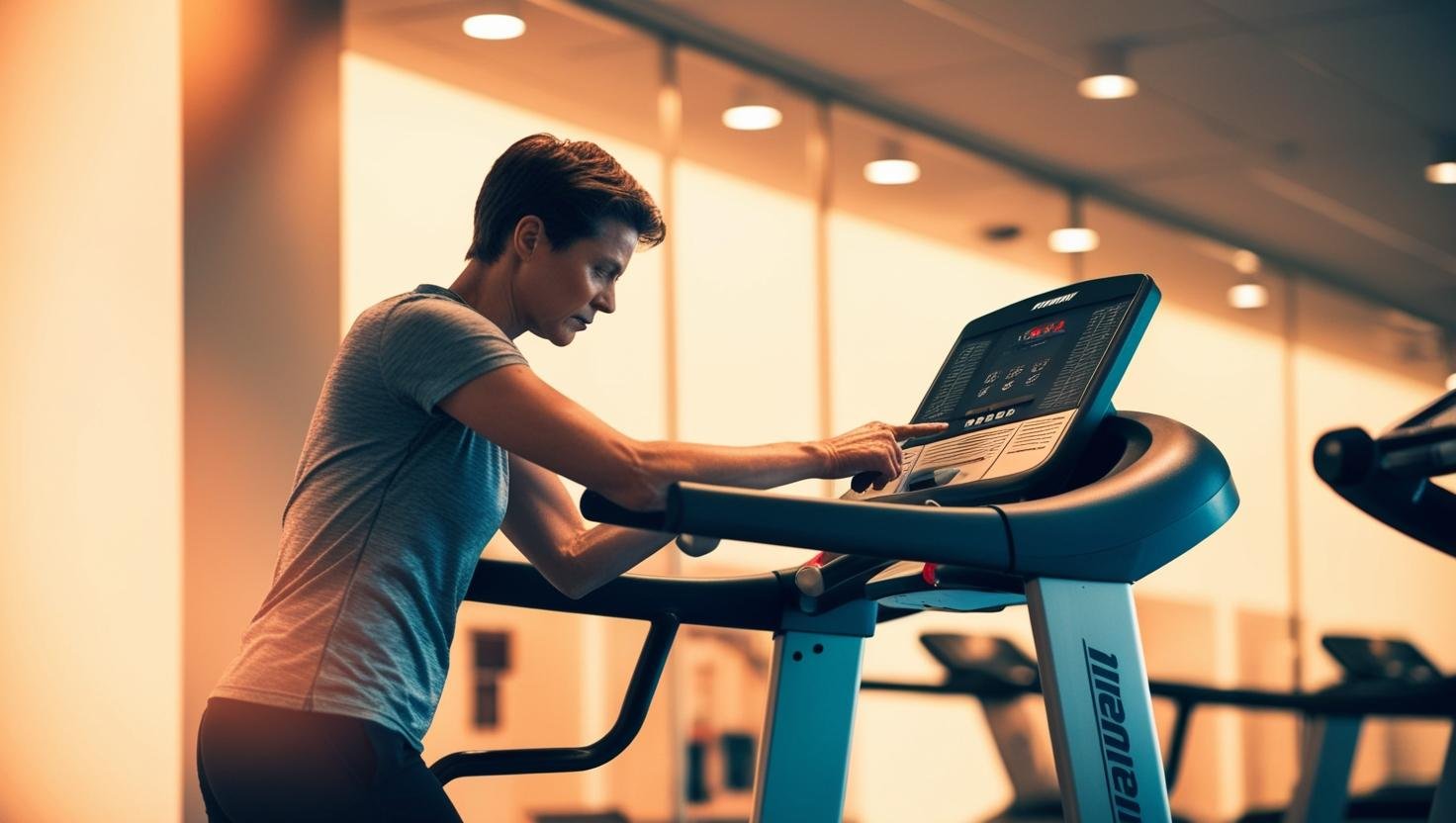
8. Don’t Forget Accessories: Enhance Your Workouts
While gym equipment forms the foundation of your workouts, accessories can improve comfort, performance, and motivation.
Gloves and Grips: Protect Your Hands
Lifting weights without proper hand protection can lead to calluses and blisters. Consider:
- Weightlifting Gloves: Provide padding and support to reduce hand fatigue.
- Grip Straps: Help with heavy lifting by improving grip strength and reducing wrist strain.
- Chalk or Liquid Grip: Prevents hands from slipping, especially useful for deadlifts and pull-ups.
Pro Tip: If you prefer a natural grip, go for fingerless gloves with breathable fabric.
Reference: The Weightlifting Gloves offer excellent support.
Water Bottles and Towels: Stay Hydrated and Dry
Staying hydrated and maintaining hygiene during workouts is crucial. Invest in:
- Insulated Water Bottles: Keep your drinks cold for long sessions.
- Sweat-Wicking Towels: Absorb sweat quickly and dry fast.
- Cooling Towels: Great for intense workouts, helping regulate body temperature.
Pro Tip: A reusable water bottle with a built-in filter is perfect for those who work out on the go.
Reference: The Water Bottle keeps drinks cold for hours.
Fitness Trackers: Monitor Your Progress
Technology can boost motivation and track fitness goals. Popular options include:
- Smartwatches (Apple Watch, Garmin, Fitbit): Track steps, heart rate, and calories burned.
- Heart Rate Monitors: Provide real-time feedback on workout intensity.
- Smart Scales: Measure weight, body fat percentage, and muscle mass.
Pro Tip: Look for fitness trackers that sync with your workout apps for a seamless experience.
Reference: The Fitbit is a top-rated fitness tracker.
9. Plan for Future Upgrades: Leave Room to Grow
Building a home gym is an investment in your long-term fitness journey. As you get stronger and more experienced, your needs may evolve. Planning for future upgrades ensures that your gym grows with you, saving money and space in the long run.
Leave Space for Future Equipment
When setting up your gym, think about how you might expand in the future. Consider:
- Extra Floor Space: Leave open areas for larger equipment like a squat rack or cardio machine.
- Wall Storage: Use wall-mounted racks or shelves to store accessories without taking up floor space.
- Foldable Equipment: Choose compact or foldable designs to maximize space efficiency.
Pro Tip: If possible, dedicate an area that can be easily reconfigured as your fitness needs change.
Choose Modular and Expandable Equipment
Investing in modular or expandable fitness gear allows you to upgrade without replacing your entire setup. Look for:
- Adjustable Dumbbells: Instead of buying multiple sets, choose ones that let you increase weight as you progress.
- Power Racks with Add-Ons: Many squat racks allow you to add pull-up bars, dip attachments, or pulley systems.
- Resistance Bands with Varying Levels: Instead of replacing bands, get a set with multiple resistance levels.
Pro Tip: Modular setups not only save money but also prevent clutter in your workout space.
Upgrade Based on Your Evolving Goals
Your fitness goals might shift over time, and your gym should adapt to them. Common upgrade paths include:
- For Strength Training: Start with free weights, then invest in barbells, weight plates, and power racks.
- For Cardio: Begin with jump ropes or resistance bands, then add a treadmill, rowing machine, or stationary bike.
- For Recovery: Foam rollers and massage guns are great initial choices, but compression therapy devices could be a future upgrade.
Pro Tip: Keep an eye out for seasonal sales or second-hand deals to save on high-quality upgrades.
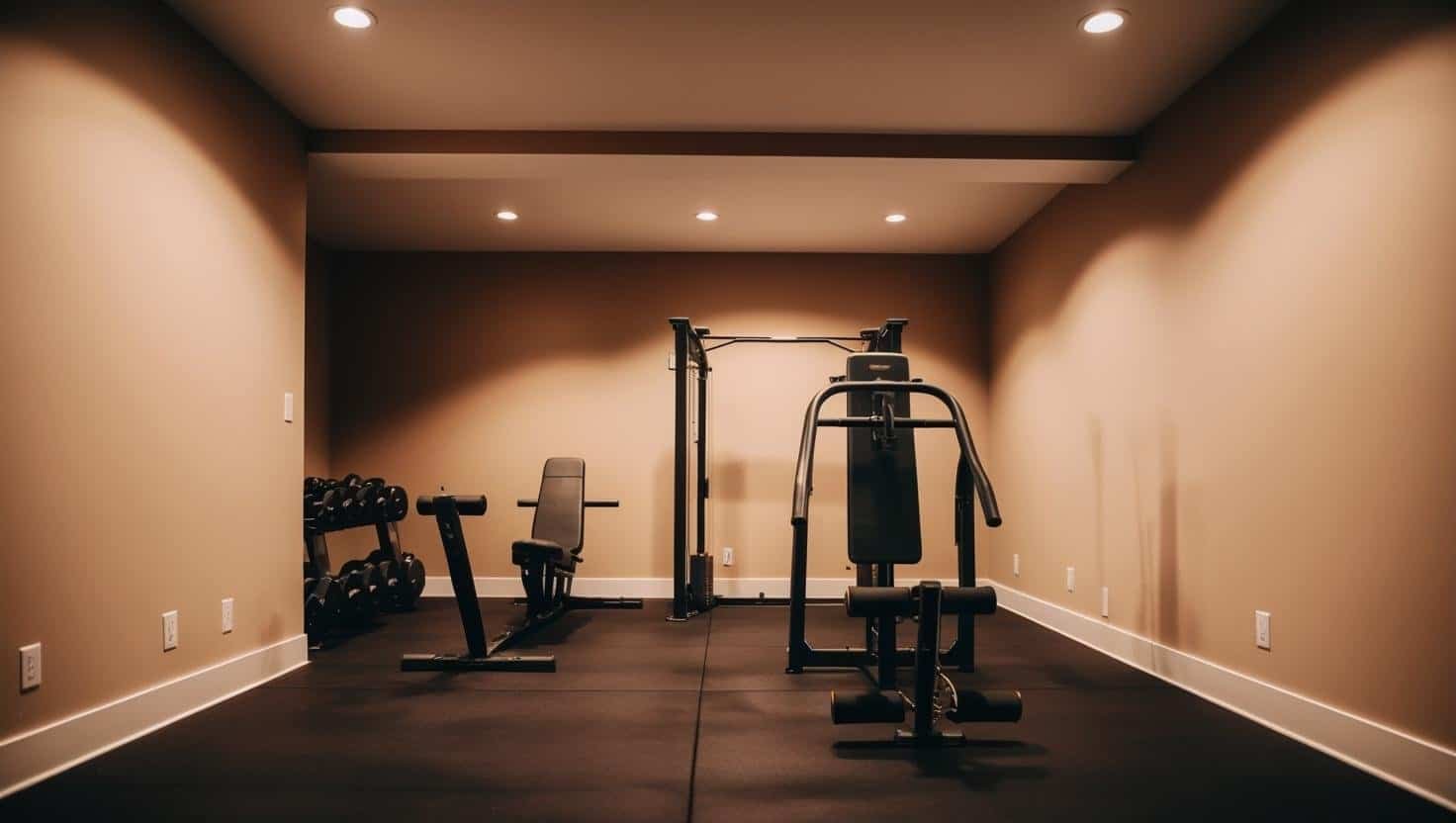
10. Seek Professional Advice: Tailor Your Gym to Your Needs
Setting up a home gym is an exciting step toward achieving your fitness goals, but choosing the right equipment can be overwhelming. Seeking guidance from a fitness professional can help you make informed decisions and avoid costly mistakes.
Get a Personalized Gym Setup
A fitness expert can assess your needs and recommend equipment that aligns with your fitness level and goals. They can help with:
- Equipment Selection: Ensuring you buy only what you need.
- Workout Programming: Designing routines based on your goals, whether it’s strength training, weight loss, or endurance.
- Space Optimization: Advising on the best layout for your available space.
Pro Tip: Many personal trainers offer virtual consultations, making it easier than ever to get professional advice.
Avoid Common Mistakes
Without expert guidance, it’s easy to fall into common home gym pitfalls, such as:
- Buying Unnecessary Equipment: Many people purchase machines they rarely use. A trainer can help you prioritize essentials.
- Ignoring Quality: Investing in durable, high-quality gear prevents replacements and ensures safety.
- Neglecting Recovery Equipment: Stretching tools, foam rollers, and mobility aids are just as important as weights and cardio machines.
Pro Tip: Read user reviews and consult fitness professionals before making big purchases.
Consider a Trainer or Online Fitness Program
If you’re new to fitness or want to maximize your results, consider hiring a personal trainer or subscribing to an online fitness program. Many trainers offer:
- One-on-One Coaching: Virtual or in-person sessions for form correction and motivation.
- Customized Workout Plans: Tailored programs that evolve as you progress.
- Equipment Recommendations: Guidance on what to buy based on your fitness goals and budget.
Suggestion: Check out Top Online Personal Training Programs for expert-led fitness coaching from home.
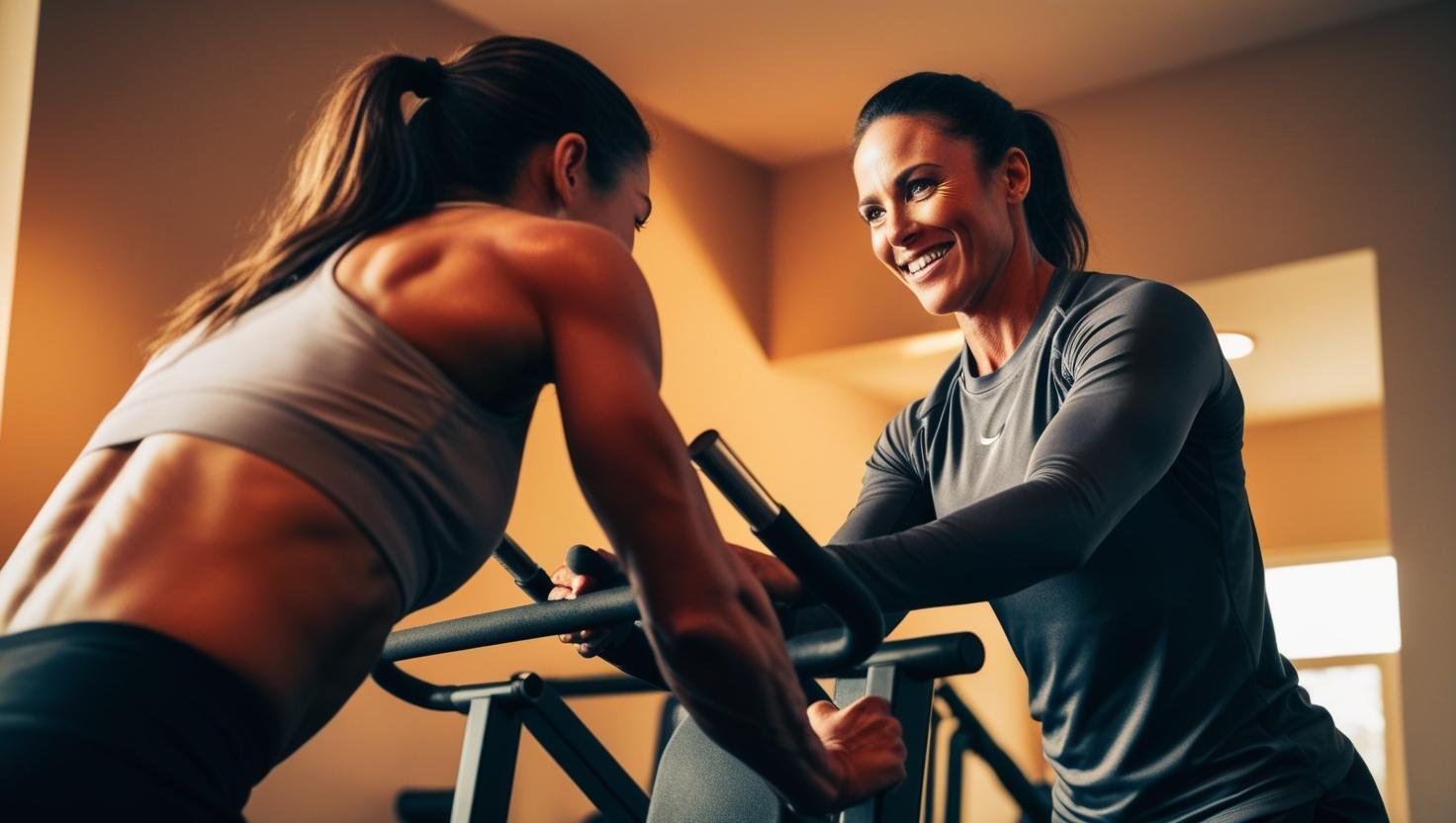
Conclusion
Choosing the right gym equipment doesn’t have to be complicated. By assessing your fitness goals, considering your space and budget, and prioritizing quality and versatility, you can create a home gym that meets your needs and helps you achieve your fitness goals. Whether you’re building a budget-friendly home gym or investing in high-end equipment, this guide ensures you make informed decisions every step of the way.
Frequently Asked Questions (FAQ)
1. What is the best gym equipment for a small home workout space?
For small home gyms, opt for compact and space-saving gym equipment like adjustable dumbbells, resistance bands, foldable treadmills, and kettlebells. These allow you to perform multiple exercises without taking up much room.
2. How do I choose the right cardio machine for home workouts?
Choosing the right cardio machine depends on your fitness goals and space. Treadmills for home use are great for running and walking, while stationary bikes for weight loss offer a low-impact workout. If space is limited, consider a compact rowing machine or a jump rope for effective cardio.
3. What is the most affordable gym equipment for beginners?
If you’re starting out, budget-friendly home gym equipment like resistance bands, a yoga mat, jump ropes, and stability balls can provide a great workout. Adjustable dumbbells and kettlebells are also cost-effective options for strength training.
4. How do I maintain and store my home gym equipment?
To keep your equipment in top shape, clean it regularly, check for wear and tear, and store items properly. Foldable home gym equipment can be tucked away when not in use, and wall-mounted racks or storage bins help organize weights, bands, and accessories efficiently.
5. What are the essential supplements for home workouts?
For effective home workouts, consider supplements like whey protein for muscle recovery, BCAAs for endurance, and creatine for strength training. If you’re focusing on flexibility and joint health, collagen peptides and omega-3 supplements can be beneficial.
Disclaimer
The information provided in this article is for educational purposes only and is not a substitute for professional fitness advice. Always consult a certified trainer or healthcare provider before starting a new workout routine or purchasing gym equipment. Some links in this article may be affiliate links, which means I may earn a small commission at no extra cost to you if you make a purchase.
